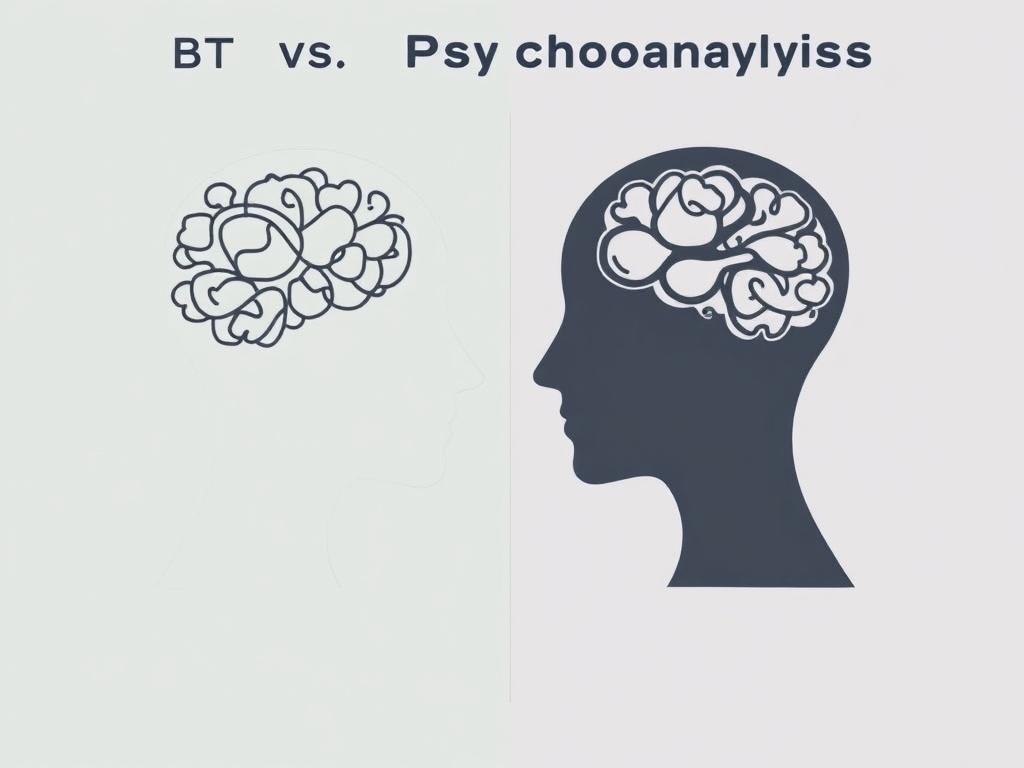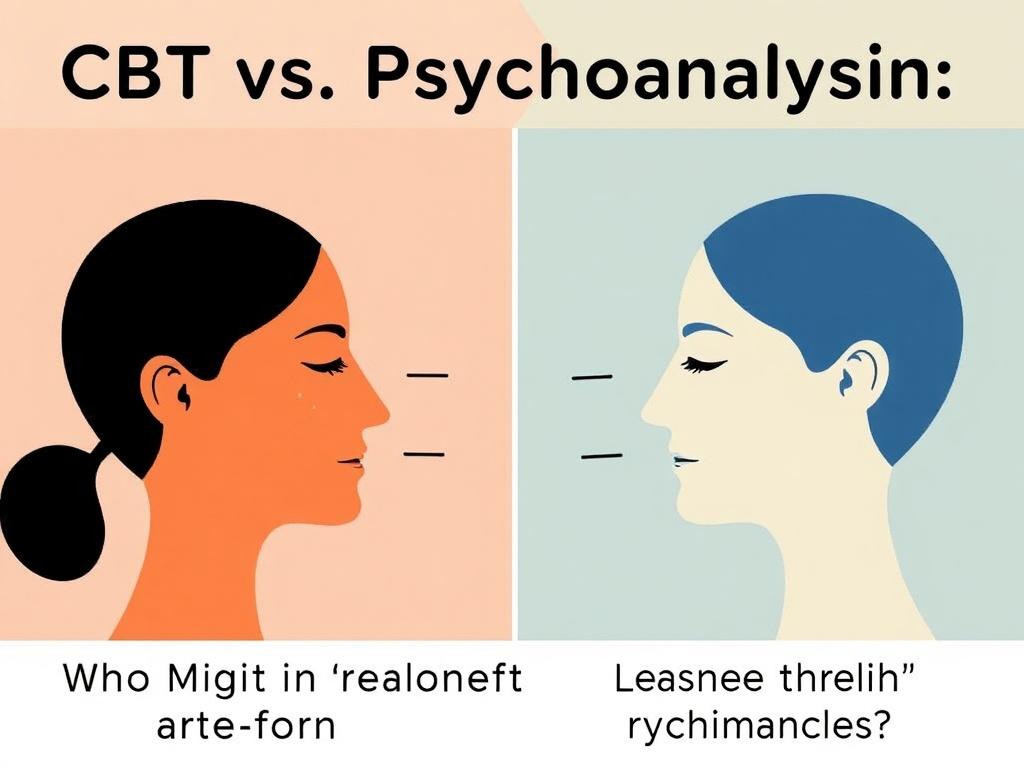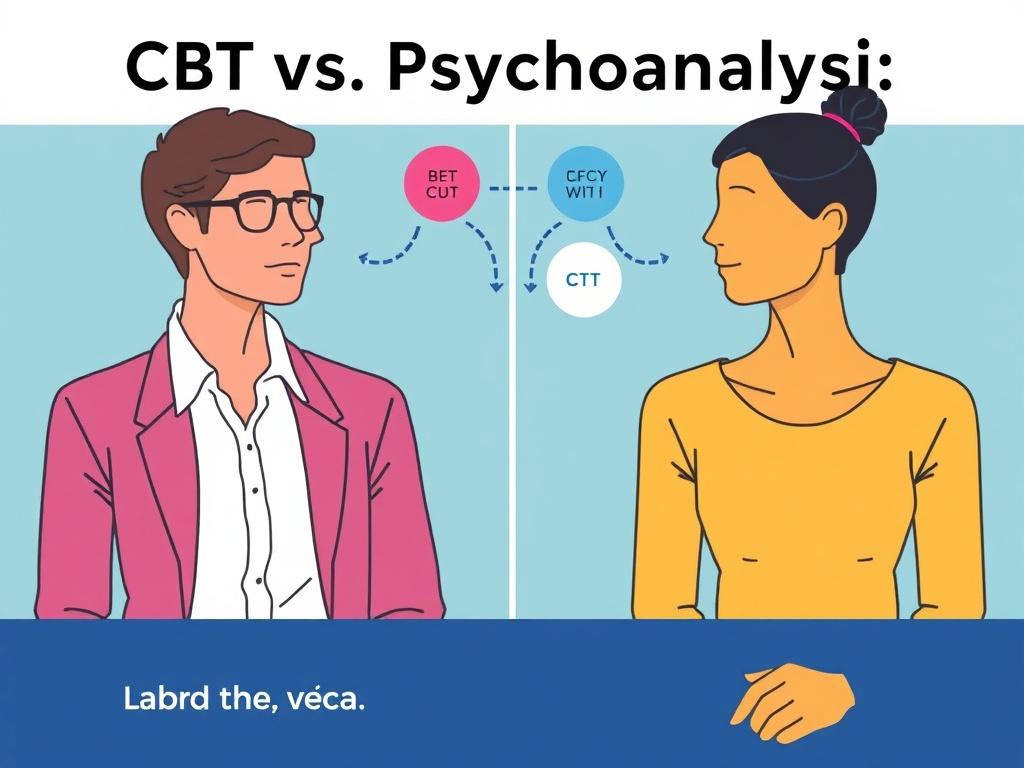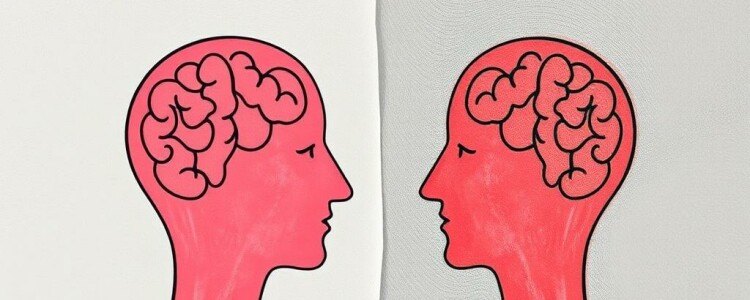When it comes to understanding the human mind and addressing mental health challenges, various therapeutic approaches offer unique pathways to healing. Two of the most well-known and widely practiced forms of therapy are Cognitive Behavioral Therapy (CBT) and psychoanalysis. While both aim to help individuals improve their psychological well-being, they differ significantly in their philosophies, techniques, and goals. Exploring these key differences can empower anyone considering therapy to make an informed decision about which approach might best meet their needs. In this article, we’ll dive deep into CBT vs. psychoanalysis, unpacking what sets them apart and where each shines.
Understanding CBT: A Hands-On Approach to Mental Health
Cognitive Behavioral Therapy, or CBT, is a structured and goal-oriented form of therapy that focuses on the relationship between thoughts, feelings, and behaviors. Its roots trace back to the 1960s when psychologists sought a more pragmatic way to help patients challenge unhelpful thinking patterns. Unlike traditional talk therapy that might explore childhood memories or deep unconscious desires, CBT is more grounded in the here and now.
The core idea behind CBT is simple yet powerful: our thoughts directly influence how we feel and act. When negative or distorted thoughts take hold, they can lead to emotional distress and unhealthy behaviors. CBT helps individuals identify these cognitive distortions — like catastrophizing or black-and-white thinking — and replace them with balanced, realistic thoughts.
The therapy is typically short-term, lasting anywhere from 8 to 20 sessions, and employs practical techniques such as homework assignments, journaling, and exposure exercises. Because of its clear structure, CBT is often used to treat conditions like depression, anxiety disorders, phobias, and even chronic pain.
Key Elements of CBT
- Focus on Present: CBT centers on current thoughts and behaviors rather than digging into past experiences.
- Structured Sessions: Therapy sessions follow a planned agenda, often involving discussion of homework tasks.
- Collaborative Process: Therapist and patient work as a team to set goals and identify problems.
- Skill Building: Patients learn coping strategies to manage their symptoms independently.
- Evidence-Based: CBT has strong research backing its efficacy across a range of mental health issues.
Getting to Know Psychoanalysis: A Journey Into the Unconscious
Psychoanalysis is one of the oldest forms of psychotherapy, developed by Sigmund Freud in the late 19th and early 20th centuries. Its foundation lies in exploring the unconscious mind and understanding how early childhood experiences shape adult personality and emotional difficulties. This approach is rooted in the belief that unresolved conflicts, often buried deep in the unconscious, influence our thoughts, feelings, and behaviors.
Unlike CBT, psychoanalysis tends to be a longer, more intensive process. Traditional psychoanalytic therapy can last for several years, with multiple sessions each week. The therapist encourages patients to talk freely about their thoughts, dreams, and memories — a technique known as free association. Through this process, hidden patterns and unresolved issues gradually surface.
One distinctive feature is the focus on transference, where the patient projects feelings about important figures in their life onto the therapist. Analyzing this dynamic helps reveal unconscious conflicts and defenses. Psychoanalysis aims not just to alleviate symptoms but to foster deep personality change and self-awareness.
Key Elements of Psychoanalysis
- Focus on the Unconscious: The therapy seeks to uncover unconscious motives and conflicts.
- Exploration of Past: Early childhood experiences are pivotal in understanding current issues.
- Free Association: Patients are encouraged to express thoughts without censorship, revealing hidden feelings.
- Transference and Countertransference: Examining emotional dynamics between therapist and patient is crucial.
- Long-Term Treatment: Sessions often happen several times per week and can last years.
Therapeutic Goals: What Are CBT and Psychoanalysis Trying to Achieve?
Both CBT and psychoanalysis aim to improve mental health, but their paths to this goal are quite distinct. Understanding these differences can help clarify which might be a better fit for a person’s personal situation.
CBT’s Target: Symptom Relief and Practical Change
CBT primarily focuses on symptom reduction and behavioral change. It is designed to quickly equip patients with effective tools to manage their problems. For example, someone struggling with anxiety might learn techniques to challenge fearful thoughts, practice relaxation skills, and gradually face anxiety-triggering situations.
Because of its structured, short-term nature, CBT appeals to those looking for tangible improvements within a limited time frame. It fosters patient autonomy by emphasizing skill development that can be applied long after therapy ends. The approach often works well for specific problems, including depression, PTSD, obsessive-compulsive disorder, and eating disorders.
Psychoanalysis’s Target: Insight and Self-Understanding
Psychoanalysis aims for a deep transformation that goes beyond alleviating immediate symptoms. By exploring the unconscious roots of emotional struggles, it seeks to help patients gain profound self-awareness and resolve longstanding conflicts. This insight, in turn, is expected to bring about lasting personality change.
Patients who choose psychoanalysis may be drawn to this method because they want to understand the “why” behind their feelings and behaviors, not just the “how” to cope with them. While results often take longer to emerge, they can be enduring and comprehensive.
Techniques and Methods: How Do CBT and Psychoanalysis Work?
CBT Techniques
CBT therapists use a variety of methods designed to reshape thinking patterns and behaviors:
| Technique | Description | Example |
|---|---|---|
| Cognitive Restructuring | Identifying and challenging negative thought patterns | Turning “I always fail” into “I sometimes succeed” |
| Behavioral Activation | Encouraging engagement in pleasurable or meaningful activities | Scheduling daily walks to improve mood |
| Exposure Therapy | Gradual exposure to feared situations | Facing fear of public speaking by practicing in small groups |
| Mindfulness Exercises | Techniques to increase present-moment awareness and reduce rumination | Guided breathing exercises during anxious moments |
Psychoanalytic Techniques
Psychoanalysis employs a set of more interpretive techniques aimed at uncovering unconscious material:
- Free Association: Speaking openly about thoughts without censorship.
- Dream Analysis: Exploring symbolism and unconscious desires in dreams.
- Analysis of Transference: Examining the feelings the patient projects onto the therapist.
- Interpretation: Therapist offers insights about unconscious conflicts and defenses.
- Resistance Analysis: Noticing when patients unconsciously avoid certain topics and exploring why.
Duration and Structure: Time Commitment Matters
One of the most practical differences between CBT vs. psychoanalysis is the commitment each requires. CBT’s structured, short-term approach usually means weekly sessions that last 45 to 60 minutes over 2 to 6 months. This condensed timeline makes it accessible for many seeking quick relief or managing manageable symptoms.
On the other hand, psychoanalysis is a long-term endeavor. Sessions often occur 3 to 5 times a week, lasting 45 minutes each, with treatment extending over several years. This intensive schedule requires a strong commitment and often a financial investment that not everyone can afford.
Patients who want a deep dive into their psyche and have the resources to commit might find psychoanalysis rewarding. Those looking for practical, faster solutions often prefer CBT.
Effectiveness and Research: What Does Science Say?
There’s a rich body of scientific research supporting CBT’s effectiveness for a broad range of mental health conditions. Studies consistently show that CBT can reduce symptoms of depression, anxiety, PTSD, and more, often with results sustained after therapy concludes. Because it’s manualized and measurable, it’s considered a gold standard in evidence-based practice.
Psychoanalysis has garnered less empirical support due to the challenges of studying long-term, individualized therapy with standardized methods. However, there is growing research indicating that psychoanalytic therapy can produce meaningful changes, especially in personality functioning and deep-seated emotional issues. Its emphasis on insight and relational patterns has informed many modern therapeutic approaches.
Who Is CBT Best Suited For?

CBT is often a go-to recommendation for people who:
- Are seeking relief from specific symptoms or disorders, such as anxiety or depression.
- Prefer a structured, practical approach with concrete techniques.
- Want relatively quick results with minimal sessions.
- Are comfortable with homework assignments and active participation.
- Enjoy working collaboratively and setting measurable goals.
Who Might Benefit More from Psychoanalysis?

Psychoanalysis may be better suited for individuals who:
- Are interested in exploring deep emotional conflicts and unconscious drives.
- Are comfortable with a long-term therapeutic relationship and process.
- Wish to understand the roots of chronic psychological patterns.
- Are motivated to undergo profound personality transformation or self-discovery.
- Feel that symptom relief alone is not enough and want richer insight.
Cost Considerations: What About Insurance and Affordability?
CBT, being shorter and more widely available, is generally more accessible price-wise. Many insurance plans cover CBT, especially since it is evidence-based. Sliding scale options exist in community clinics, and some therapists offer online sessions to reduce cost.
Psychoanalysis’s longer duration and high frequency of sessions can make it costly. Insurance coverage varies and may be less common for psychoanalytic therapy. However, those committed to this intensive process often find it financially worthwhile given the depth of change it can foster.
Combining Approaches: Is There Room for Integration?

While CBT and psychoanalysis stand on different therapeutic philosophies, it’s worth noting that modern psychotherapy often blends elements of both, tailored to the individual patient. Some therapists trained in psychoanalytic concepts may incorporate CBT techniques and vice versa. Approaches like psychodynamic CBT or brief psychodynamic therapy aim to marry insight with practical skill-building.
This integration can address both surface symptoms and deeper personality issues, offering a more comprehensive treatment. The key is finding a skilled therapist who can navigate your personal needs and preferences.
Summary Table: At a Glance Comparison of CBT vs. Psychoanalysis
| Characteristic | CBT | Psychoanalysis |
|---|---|---|
| Focus | Current thoughts and behaviors | Unconscious mind and past experiences |
| Duration | Short-term (weeks to months) | Long-term (years) |
| Session Frequency | Weekly | Multiple times per week |
| Therapeutic Goal | Symptom relief and skill building | Insight and personality change |
| Techniques | Cognitive restructuring, exposure, homework | Free association, dream analysis, transference |
| Research Support | Strong, evidence-based | Growing but less empirical |
| Best For | Short-term symptom management | Long-term self-exploration |
| Cost | Typically lower | Typically higher |
Conclusion
Choosing between CBT vs. psychoanalysis boils down to what you want to achieve through therapy and how much time and energy you’re ready to invest. CBT offers a practical, efficient path for many people struggling with specific symptoms and provides the tools to better cope with daily challenges. Psychoanalysis, conversely, invites you on a profound journey into the unconscious that can reshape your personality and deepen self-understanding over time. Both approaches have their strengths and limitations, and the best choice depends on your personal preferences, goals, and life circumstances. Ultimately, therapy’s success rests not only on the method but on the quality of the therapeutic relationship, your willingness to engage, and the support you receive along the way.




















